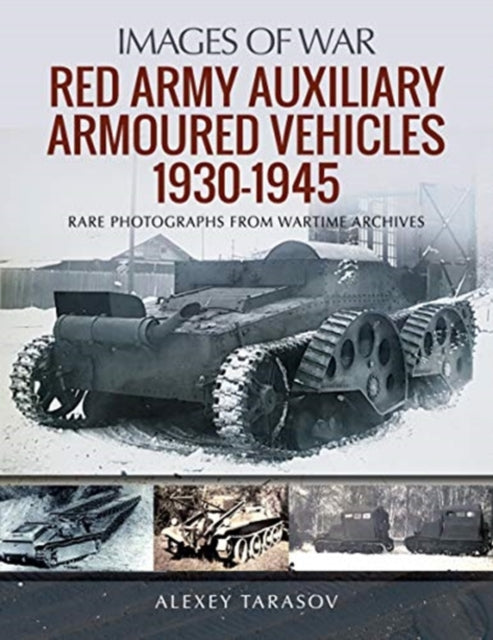Images of War: Red Army Auxiliary Armoured Vehicles, 1930-1945 by Alexey Tarasov
Usually shipped within 24 hours
UK deliveries from £4.95
Delivery & Returns
Delivery & Returns
We use the Royal Mail, DHL Express or UPS for our customers. For UK addresses, deliveries under 10kg are a standard £4.95 via Royal Mail Tracked 48 Service. For orders over 10kg and overseas customers, postage is calculated for you at checkout once you have entered your postal address. This price, does not include any potential custom charges that may apply, depending on the product or destination, as every country has very different import duties / taxes. Online exclusive products (such as trainers) will be delivered to you directly from the printer, separate from other items in your order, but your postage fee covers ALL items in your order.
If you are unhappy with your purchase, please email shop@tankmuseum.org within fourteen (14) working days of receiving your goods, and return it to us at the address below, in its original condition, unopened (with any seals and shrink-wrap intact) and we will issue you a full refund or replace it. Goods must be returned at your own cost. If the item is faulty, you do not need to return it, we will send you a replacement free of charge.
Description
Description
By Alexey Tarasov
During the 1930s in the Soviet Union a remarkable range of auxiliary armoured vehicles were produced for the Red Army which have rarely had the attention they deserve, and Alexey Tarasov's photographic history is the ideal guide to them. These innovative designs demonstrate the diversity and innovation of the Soviet arms industry.
Among them were armoured flails, ambulances, bridge-layers, flame-throwers and amphibious cars which prefigure similar designs made by western engineers during the Second World War.
As this selection of rare photographs shows, Soviet designers were in many ways ahead of their time and it was short-sighted internal policy and the shortcomings of Soviet industry which led to the cancellation or postponement of many of these promising projects. As a result, when faced with Operation Barbarossa in 1941 the Red Army lacked the auxiliary armour that would have helped to stem the German advance. Alexey Tarasov's in-depth research and the rare photographs he has assembled give a fascinating insight into a little-known aspect of the history of Soviet armoured vehicles.








